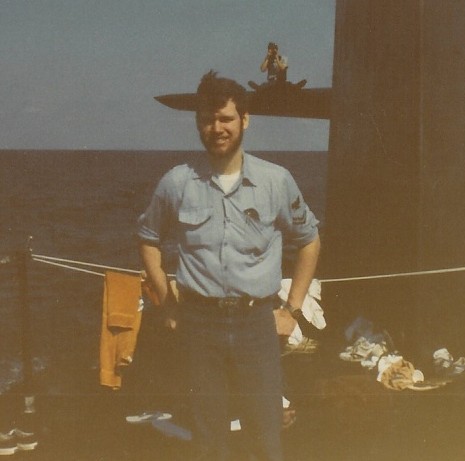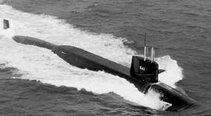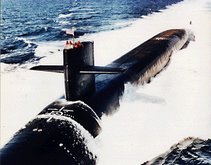A ceremony held on Sept. 7, 2005 marked the Change of Command for the USS Alabama SSBN 731, combining of crews and the retirement of the Blue Crew CO Cmdr. Kevin A. Fontes. It also marked the last Trident submarine scheduled for shipyard conversion to the Trident II (D5) missile system.
The USS Alabama Gold Crew was also awarded the Chief of Naval Operations (CNO) Afloat Safety Award on Sept. 2 after the completion of the Sub's historic 67th deterrent patrol and the last operational deployment of the Trident I (C4) missile system.

First Test Launch of Trident I (C4) Missile Jan. 18, 1977
(Source: DOD File Photo)
The C4 missile system, at 26 years, was the longest deployed US SLBM entering service in 1979 and being retired this year. The Missile was first back fitted to 12 Poseidon submarines and later the first 8 Tridents. The USS Francis Scott Key (SSBN-657) was the first submarine to successfully launch a C4 missile in July 1979. In October that year, SSBN-657 became the first submarine to go on patrol with the Trident I C-4.
The Trident I C4 missile was developed primarily a weapon of deterrence, adhering to Secretary of Defense Robert S. McNamara's Mutual Assured Destruction or MAD doctrine. The missile had an estimated range of 4000 nm nearly double it's predecessor but lacked the ability to effectively target hardened enemy ICBM missile silos.
The current Trident II (D5) missile is the culmination of Secretary of Defense James Schlesinger's concept of counterforce as deterrence. Entering service in 1990 the D5 missile could be considered a first strike weapon when measured against the improvement in accuracy and range over it's predecessor the C4. However, under the counterforce as deterrent doctrine the targeting of enemy's strategic weapons systems would only be used an immediate retaliatory response and for a first strike.
It seemed only fitting to post the news on this planned obsolescence of the C4 weapons system. I served on one of the first subs USS Simon Bolivar (SSBN 641) and the very last USS Alabama (SSBN 731) the last to carry that system to sea.
Update: 9/21/05 - 13:00 From a reader of TheSubReport "The conversion of the Alabama to D5 Backfit also marks the end of the SINS based navigation system. This system has been supporting the Strategic Weapons System since the Polaris days, almost 50 years."
Almost 50 years longevity is a remarkable achievement for a system as complex as the SINS -Ships Inertial Navigation System. SINS was created out of the joint Army/Navy JUPITER program then further developed to support the POLARIS program. Although a Regulus guided missile submarine, the USS Halibut (SSGN 587) was the first submarine to carry the Ships Inertial Navigation System (SINS) back in 1960.









No comments:
Post a Comment